Foreign "national coffee" compete for the beach, who is China's national coffee?
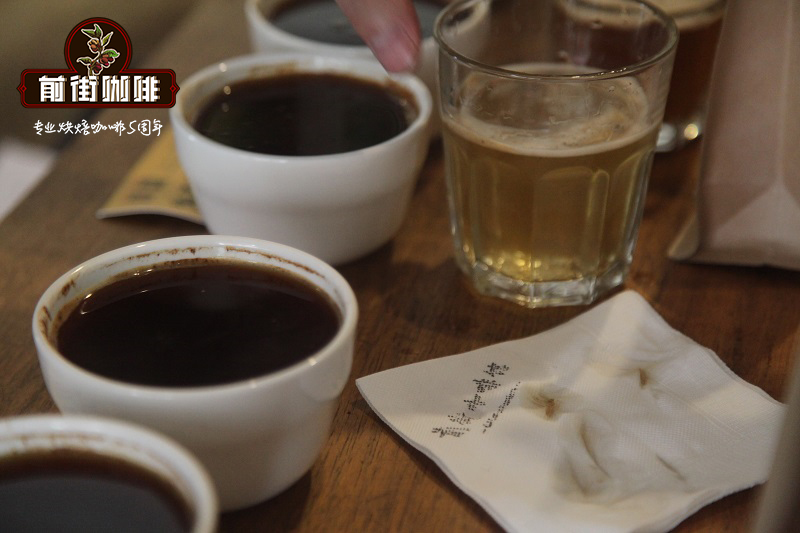
Professional coffee knowledge exchange more coffee bean information please follow the coffee workshop (Wechat official account cafe_style)
Wen / Nicole
Source: retail Krypton Planet (ID:LS-KXQ)
Almost all the national coffee in the world has arrived, but the competition in the Chinese coffee market has just begun. Who will be the potential stock of Chinese national coffee?
Next Tuesday, February 26th, the 4850th global store of Canadian national coffee brand Tim Hortons, the first store in China, will be opened in Shanghai. The brand, founded by legendary hockey player Tim Horton in 1964, crushes Starbucks with 63 per cent of the market share at home, and is a well-known national coffee brand in Canada.
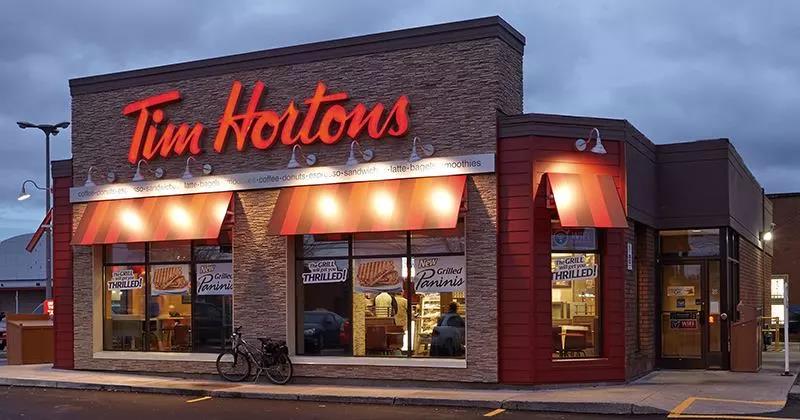
A Tim Hortons store in Canada
Seven months ago, Japanese national coffee brand Doutor just opened its first store in China in Shanghai. Earlier, Australian National Coffee Gloria Jeans Coffees entered China through Tianjin Goubuli Group from 2015. COSTA, a British coffee chain that came to China in 2008, has been catching up with Starbucks in the Chinese market.
Mintel, a consultancy, forecasts that sales in the Chinese coffee shop market will grow at a compound annual growth rate of 5.7 per cent between 2017 and 2022, reaching 79.4 billion yuan by 2022, while the number of coffee shops is expected to reach 80, 000.
20 years after Starbucks entered the Chinese market in 1999 to enlighten the coffee culture, China, the world's most potential coffee consumer predicted by consulting firms, has become a hot spot for global coffee national brands. everyone is looking forward to detonating the market.
But so far, according to Retail Krypton, foreign coffee brands that have entered China now have one thing in common: almost without exception, they follow Starbucks' social and experiential style.
In other words, coffee, as an imported product, has been defined as a "petty bourgeoisie" in China for many years, with an additional sense of identity that can convey life and identity, meeting friends or business negotiations in comfortable cafes, so that drinking coffee has become a light extravagant consumption in people's eyes.
Drinking coffee is also routinely tied to the social and space needs of cafes. In terms of price alone, in Europe and the United States, the price of a cup of Starbucks is roughly 1/1000 of the monthly income, while in China it is about 1%.
There are more and more foreign coffee brand chains in the Chinese market, but when they come to the Chinese market, they do not have the "people-friendly style" of the local market. Hinder high-frequency consumption, so that coffee consumption is more limited to social and dating scenes, it is difficult to become the needs of daily life.
Passive upgrading of Foreign "National Brands" in China
The so-called national brand is a product with strong market competitive advantage, high quality level and high performance-to-price ratio in a national market, which can be widely purchased by its own residents. compared with foreign products, it is enough to represent the consumption will of most of the country's citizens.
Take Tim Hortons of Canada and Doutor of Japan as examples, the commonness of the two foreign national coffees is low price, high quality, all over the streets, and easy to buy.
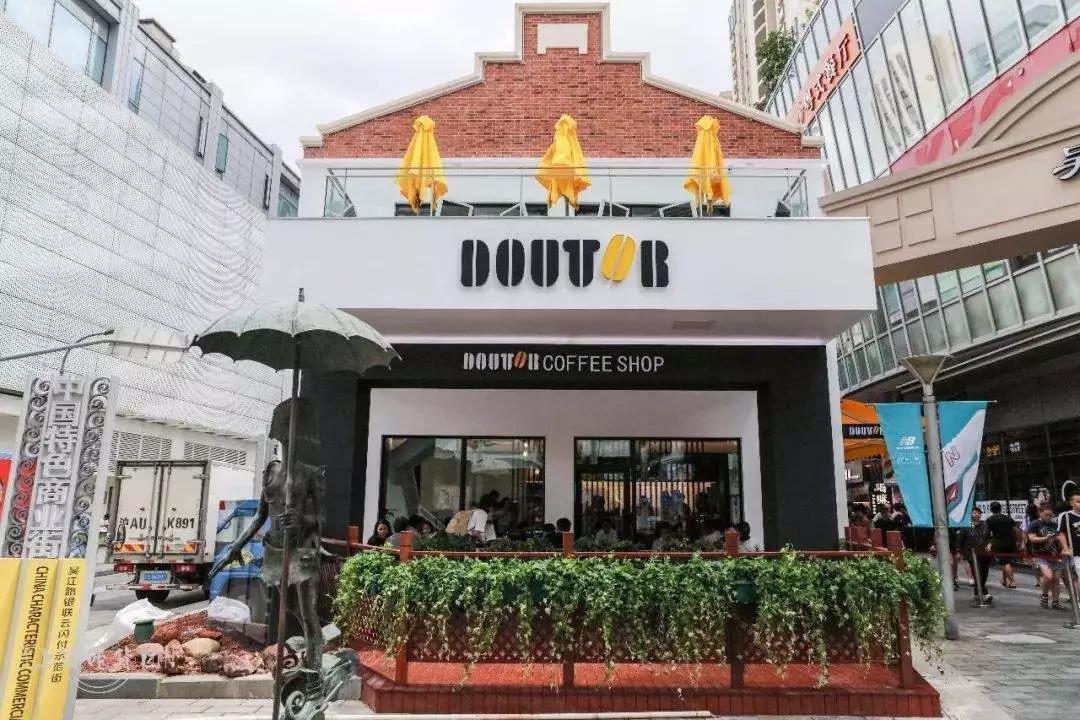
The first store of Doutor in China on Wujiang Road in Shanghai
Doutor has a 56-year history and currently has more than 1300 stores in Japan, all over subway stations and crowded places. For the third year in a row, it has surpassed Starbucks in terms of popularity and ranked first in the Japanese market. In addition to the most famous coffee, Doutor has many other snacks, including breakfast sandwiches and afternoon tea desserts. Unlike other coffee chains, Doutor is known for its price.
Bird Yu Bodao, founder of the Doutor brand, once said, "I want to provide consumers with delicious coffee at no price." In Japan, Doutor's medium latte is 300 yen, equivalent to about 18 yuan in RMB/ cup, and medium coffee is 16.5 yuan RMB.
The same goes for Tim Hortons, which has a wide variety of menus, including freshly brewed coffee, specialty tea, fruit smoothies, fresh baked goods, burritos, soups, etc., which are found in Canadian streets, gas stations, highway rest stations and school coffee snack bars.
Canadians drive to work in the morning, buy a cup of coffee, add a doughnut, two or three Canadian dollars, and a breakfast at the corner or downstairs of the office. One netizen said that Tim Hortons is half a home to him. Whether you come to a strange town in Canada or drive to a strange highway exit, seeing Tim Hortons means cheap coffee snacks, toilets and WIFI.
Judging from the current pricing and decoration of Doutor's first store on Wujiang Road in Shanghai, for example, 18 yuan for selected drip coffee, 49 yuan for chestnut thousand-layer cake, and 37 yuan for baked almond caramel lattes, Doutor's store in China is the size and pricing of its Japanese high-end store (the Shanghai store has two floors, which is larger than many Japanese standard stores), which is lower than Starbucks.
A person in the industry who knows Japanese coffee brands told Retail Krypton that in the Japanese market, Doutor coffee shops are roughly divided into three levels, the most are standard stores, mainly joining, while high-end stores and boutiques are mostly directly operated. The positioning of Doutor's first store in China is not a common standard store on the streets of Japan.
So, how do you play Tim Hortons in China?
According to Dianping's current spoiler Tim Hortons Shanghai first store, the interior decoration can be called the middle and high end, and Canada's Tim Hortons ordinary small store is a qualitative change. The price for freshly brewed coffee is 17 yuan, plus 29 yuan for macchiato and 30 yuan for blueberry and strawberry yogurt. Overall, it is below the price level of Starbucks.
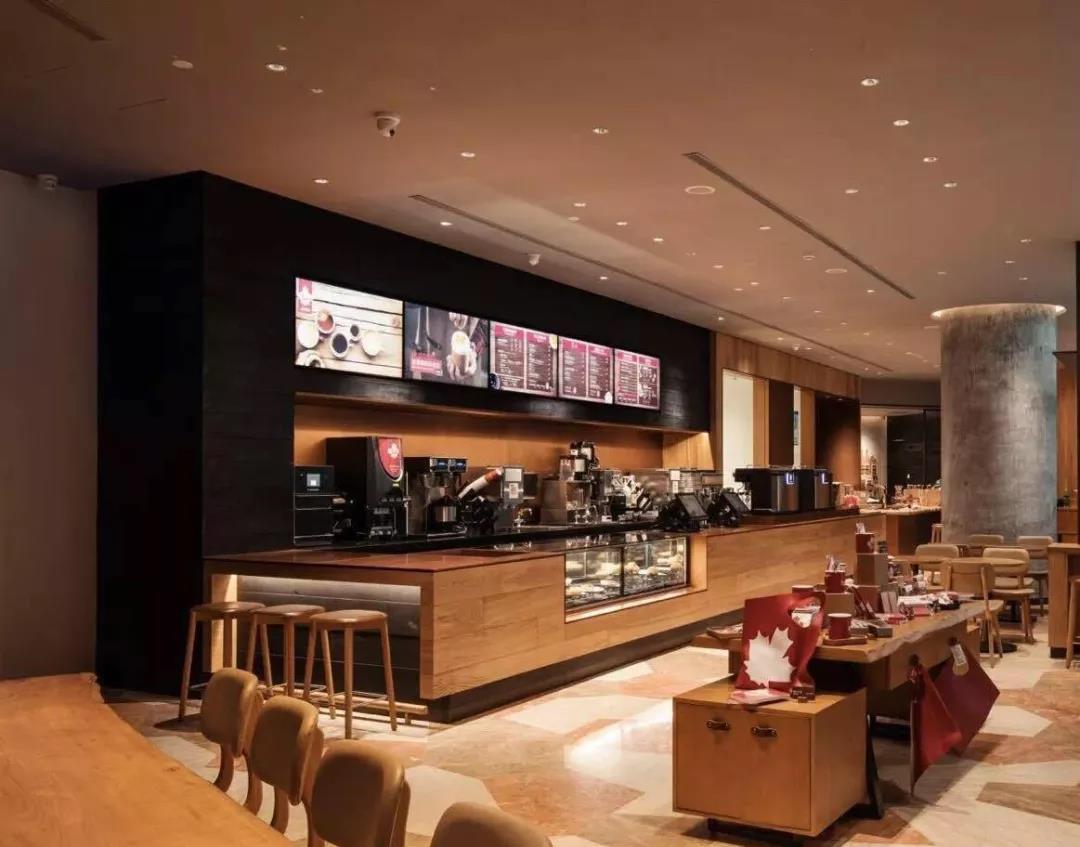
Source of Tim Horton's first store in China: Dianping.com
Therefore, Tim Hortons is a mid-range leisure social coffee shop in China, offering special desserts to achieve a Canadian-style dining experience at a lower price than Starbucks.
To sum up, entering China, whether Tim Hortons or Doutor, did not continue the local people-friendly characteristics, basically in line with Starbucks, to emphasize the social nature of coffee, to enhance the experience of the third space. This is understandable, after all, China's freshly ground coffee market is in a period of growth, with high rents, high labor costs, insufficient user density and too small size to seem to be able to win at low prices. The first store in overseas market is facade and has image demand.
However, if you lack the brand appeal that Starbucks has operated for many years, and compete with the way Starbucks is good at playing, it may be embarrassing to explore in the mid-range of brands.
Since 2015, Australian coffee giant Gloria Coffee has opened no more than 100 stores in China. British national coffee chain COSTA entered China "close" Starbucks to expand aggressively, with two local power partners, once planned to open 2500 stores in 2018, but now there are fewer than 500.
After Doutor's first store in China became popular as an "online celebrity coffee" in Japan, it is said that there is no longer the popularity of waiting in line at the beginning.
In July last year, an industry observer named "supermarket Lao Wan" wrote that Tim Hortons, which claims to open 1500 coffee shops in China within 10 years, was "unsuccessful" in China.
Also last year, South Korea's largest coffee chain, Coffee, which had ambitious expansion in the Chinese market, accompanied you (Caffe Bene) in a joint venture in China after years of debt crisis and eventually went bankrupt.
Starbucks, which has been in China for 20 years, has also suffered a surprise slowdown in growth over the past year. The latest results released by Starbucks in January 2019 showed that same-store sales in China rose 1 per cent, although it has stopped falling for two consecutive quarters compared with the 2 per cent decline in same-store sales in 2018 Q3, but compared with the growth rate of 6-7 per cent in 2018 Q1 or before. Starbucks' growth in China has slowed significantly.
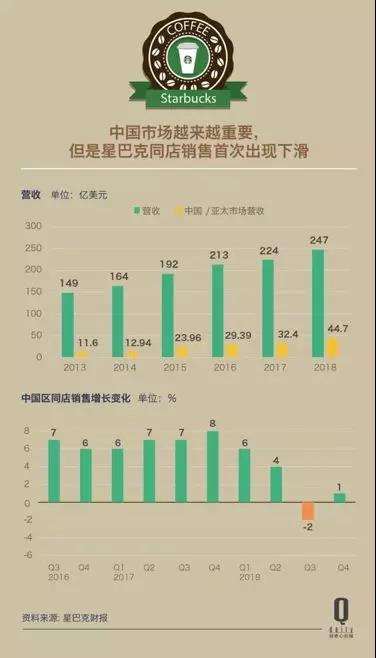
Photo: curiosity Daily
Foreign brands have entered China one after another. in the world's busiest emerging growth market, do you continue to emphasize the old style of coffee experience, or do you need some new way to completely detonate the market where coffee consumption needs to be popularized on a large scale?
Who is China's national coffee potential stock?
In the research data of many institutions, the growth rate of China's coffee market is gratifying, and it is a new blue ocean for foreign coffee brands to boost morale and accelerate their efforts.
However, over the years, there have been two major bottlenecks in China's coffee consumption market: one is that the price is too high. Compared with other drinks, the price is on the high side, hindering high-frequency consumption. As an imported drink, the light luxury and social coffee positioning created by Starbucks over the past 20 years is very influential; second, it is inconvenient to buy. Grinding coffee shops are not everywhere, hindering high-frequency daily consumption.
A comparable figure is that 23.5 million people in Taiwan have more than 5000 City Cafe, while Beijing has 29 million. As of June 2018, there were fewer than 300 Starbucks, and the average purchase distance of professional coffee shops is 30 minutes' walk.
In the Chinese coffee market, so far, there is an obvious "convention": coffee shops offer coffee with more added social and lifestyle value, which makes it more difficult to provide (decoration and rent, manpower), and coffee is expensive. It also hinders more people from using coffee as their daily consumption.
However, with the outbreak of the coffee market, it is necessary to popularize coffee consumption and have a more consumer base, so that players entering this market can get greater development possibilities and returns.
In a market, once one or two new entrants decide to simplify products and services and significantly reduce prices, it is likely that demand will explode and the industry will change permanently.
In history, the advent of Ford Model T made 1908 an important year in industrial history: the Model T made the car into the home of ordinary people as a practical tool at a low price, and the United States has since become a "country on wheels".
Not only the Ford Model T, but also the rise of IKEA and low-cost airline Southwest Airlines provides an example of unique marginal innovation, and the "redesign" of products with simplified prices has spurred demand growth and won the explosion of their own brands:
Inspire a huge mass market and a business system that is more effective than all competitors, at least in the early stages, that cannot be imitated or easily surpassed in scale, continuously lowering the experience curve, continuing to save costs, and strictly controlling profits to win on a large scale.
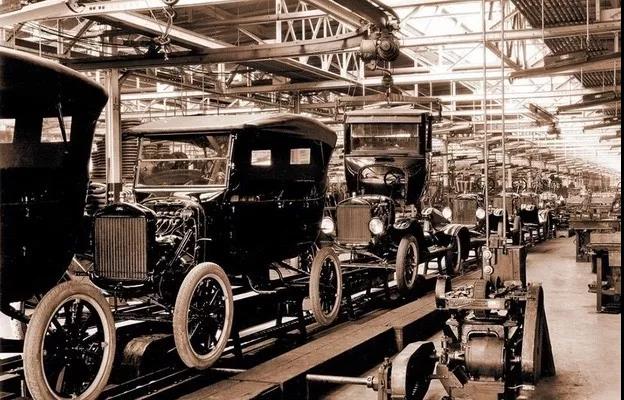
The civilian Ford Model T creates a legendary history
In other words, over the past few decades, coffee has been attached to too many social attributes and high-end feelings in China. But a simplified coffee brand has the potential to reshape the market.
Unlike most people's definition of "coffee", Luckin Coffee, who entered the market in 2018, tried to make coffee "available and affordable", return to the nature of "one drink" and build a business system that is very different from Starbucks' efforts to be "classy".
Although, Luckin Coffee founded the speed of development this year let people inside and outside the industry "consternation", there is no lack of controversy.
First of all, if the construction of 4500 stores can be completed as scheduled by the end of 2019, Luckin Coffee will be the most extensive coffee chain in the Chinese market. Obviously, since its inception, capital-assisted fast enclosure is to exchange capital for time, quickly gain the advantage of scale, and quickly verify the style of play.
Thirdly, Ruixing is a new retail coffee brand. Another interpretation of the "new retail" label is that Lucky is the coffee that makes the best use of the new business infrastructure, changing the current operating cost model of the coffee industry as defined by Starbucks. High quality, high performance-to-price ratio and high convenience are the core barriers that Luckin Coffee wants to build. By reducing store costs, customer acquisition costs, nurturing product quality and reducing available prices, it has become a set of systematic cost structure innovation.
There are two obvious examples, one is the cost of stores, a variety of large and small stores throughout office lobbies, universities, gas stations and enterprises, which can quickly cover the market in a flexible way and reduce costs; in addition, through unmanned cashier full-time self-service, save the store labor and operating costs: cashiers, cashiers, etc. Luckin Coffee's application of these new commercial infrastructure, similar to Ford's use of automobile production line technology, has led to a rapid increase in the production of Model T cars and a sharp reduction in costs.
Nowadays, many people are keen to discuss the comparisons between Luckin Coffee and Starbucks. Obviously, Luckin Coffee "tied up" Starbucks at the beginning of its establishment, which can make the market aware and get more attention as soon as possible.
But in essence, the positioning of the two is very different: one is to consume cost-effective coffee anytime, anywhere, the new retail platform; the other is to pay attention to the third space, continue to strengthen the high-end positioning of coffee chain stores, the difference between the two is becoming more and more obvious.
On February 16, Starbucks China's first new selection store featuring baked food-Starbucks Zhenxuan Coffee Bakery opened in Shanghai, with on-site freshly made Italian roasting and classic Italian special drinks. A customized weekend brunch selection, this is a new attempt to upgrade Starbucks China's "third Space" store, trying to evolve from a coffee shop to an all-weather one. A stylish coffee + restaurant.
This means that Starbucks wants to continue to promote high-end, tonal social leisure space in China, the advantage is to maintain the brand premium, the disadvantage is the high cost of stores, difficult location, the progress will be slow.
And Luckin Coffee takes the cost-effective, ubiquitous full scene, national route.
Lucky and Starbucks are not zero-sum games, but may enrich and expand the Chinese coffee market, promote the popularization of coffee, and bring more possibilities.
Two routes, two ways of playing. Completely different from the full set of business logic of coffee shop operation in the Chinese market in the past, it is the foundation of today's "lucky speed", which also makes Ruixing a typical case of local coffee brands.
To be sure, despite the influx of foreign coffee brands, they still follow the social and experiential coffee shop operation model, and how to promote the popularization of coffee consumption is still a problem, unable to detonate a larger incremental market. Big water and big fish, only when the coffee consumption market is larger, can there be more opportunities for players, whether it is a foreign brand or a national brand.
The play of "catfish" Luckin Coffee provides the possibility of a new route to promote the popularization of coffee.
What is the way to detonate the Chinese coffee market? who will be the Chinese national coffee potential stock?
Important Notice :
前街咖啡 FrontStreet Coffee has moved to new addredd:
FrontStreet Coffee Address: 315,Donghua East Road,GuangZhou
Tel:020 38364473
- Prev
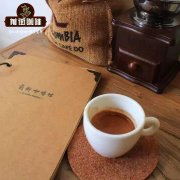
Stroking a cat is risky! Are you aware of the security risks behind the cure of acting cute in pet coffee shops?
Professional coffee knowledge exchange more coffee bean information please follow the coffee workshop (Wechat official account cafe_style) nowadays, all kinds of coffee shops emerge in endlessly. These stores not only work hard on drinks and even dishes, but also attract the attention of the patterns in the store. Among them, pet coffee shop as a type of coffee shop with small animal elements, although it is not very new, but this
- Next
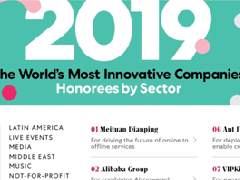
Luckin Coffee was selected as China's TOP10 on the list of Global Innovation Enterprises.
Professional coffee knowledge exchange more coffee bean information please follow Coffee Workshop (Wechat official account cafe_style) on February 20th, the well-known American business magazine "Fast Company" (Express) released the 2019 list of the world's most innovative companies. Luckin Coffee, who has been in operation for one year, was selected as China's most innovative company in TOP 10, becoming the fastest on the list. In "Fast Compa"
Related
- What ratio of water temperature and ground does the smart cup method use to press coffee? The difference between brewed coffee and filtered coffee?
- What is the standard process for the purpose of coffee cup testing? What is the difference between hand-brewed coffee and cup testing?
- How to use hand-brewed coffee paragon small golden balls? How does cold coffee lock in the aroma of coffee?
- Is American coffee black? What is the difference between American coffee and drip coffee?
- Unexpected! Well-known tea beverage brand Lele Tea will withdraw from the Zhengzhou market!
- Starbucks enters the fashion and beauty industry?! Netizen: Give me an ice American eye cream
- Why can American refills for free? The difference between Americano and American drip pot coffee
- Being chased out of the rain in front of Starbucks?! Store: Sheltering from rain under umbrellas poses a safety hazard
- The white moonlight has changed?! Lucky launches "Big Winter Pear American"
- Hand-brewed coffee three-stage method, high-sweet and universal brewing method to share! What does the high sweet water level of hand-brewed coffee mean?

